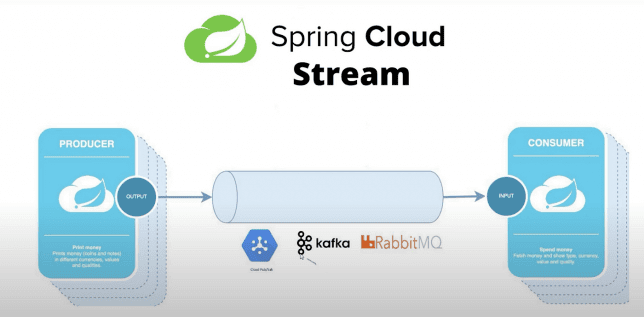Why use Spring Cloud Stream and not messaging libraries?
Spring Cloud Stream is a powerful framework that provides a simple and consistent programming model for building message-driven microservices. It abstracts away much of the complexity of messaging systems and makes it easy to build, test, and deploy message-driven applications. In this article, we will discuss why you should use Spring Cloud Stream instead of messaging system libraries directly.
- Simplifies the development process
Messaging system libraries require you to write a lot of boilerplate code to handle tasks like serialization, deserialization, and error handling. Spring Cloud Stream abstracts away much of this complexity and provides a consistent programming model that makes it easy to build message-driven applications.
- Provides a consistent programming model
Spring Cloud Stream provides a consistent programming model that makes it easy to write and maintain message-driven applications. The programming model is based on the concept of a message channel, which represents a stream of data. This makes it easy to write code that processes data in a stream-oriented way.
- Supports multiple messaging systems
Spring Cloud Stream supports multiple messaging systems, including Kafka, RabbitMQ, and Azure Event Hubs. This means that you can use the same programming model to build message-driven applications regardless of the messaging system you are using.
- Provides integration with other Spring projects
Spring Cloud Stream integrates with other Spring projects, such as Spring Data and Spring Integration. This means that you can use Spring Cloud Stream as part of a larger Spring-based application and take advantage of other Spring features and libraries.
- Provides support for reactive programming
Spring Cloud Stream provides support for reactive programming using Spring WebFlux. This means that you can write message-driven applications that are fully reactive and take advantage of the benefits of reactive programming, such as improved performance and scalability.
- Provides built-in support for key features
Spring Cloud Stream provides built-in support for some of the key features of messaging systems, such as message routing, message filtering, and message transformation. This means that you don’t have to write custom code to handle these features, and you can focus on writing your application logic instead.
- Simplifies deployment
Spring Cloud Stream provides a simple deployment model for message-driven applications. It uses Spring Boot to create self-contained, executable JAR files that can be easily deployed to a variety of environments. This means that you can focus on writing your application code and let Spring Cloud Stream handle the details of deployment.
- Supports testing and debugging
Spring Cloud Stream provides testing utilities that make it easy to test and debug message-driven applications. You can use these utilities to simulate message streams and test your application logic in a controlled environment. This makes it easier to catch bugs and ensure that your application is working correctly.
- Provides a community-driven ecosystem
Spring Cloud Stream is part of the larger Spring ecosystem, which has a large and active community. This means that you can take advantage of a wealth of resources, such as tutorials, documentation, and third-party libraries. You can also participate in the community by contributing code or providing feedback.
- Simplifies the migration to newer messaging system versions
Messaging systems are rapidly evolving platforms, with new features and improvements being added all the time. Spring Cloud Stream provides a migration path to newer messaging system versions that is easier than using messaging system libraries directly. This is because Spring Cloud Stream abstracts away much of the complexity of messaging systems, which makes it easier to upgrade to newer versions of messaging systems without having to make significant changes to your code.
In summary, Spring Cloud Stream provides many benefits over using messaging system libraries directly. It simplifies the development process, provides a consistent programming model, supports multiple messaging systems, integrates with other Spring projects, provides support for reactive programming, provides built-in support for key features, simplifies deployment, supports testing and debugging, has a community-driven ecosystem, and simplifies the migration to newer messaging system versions. By using Spring Cloud Stream, you can focus on writing your application code and let the framework handle the details of interacting with messaging systems.


